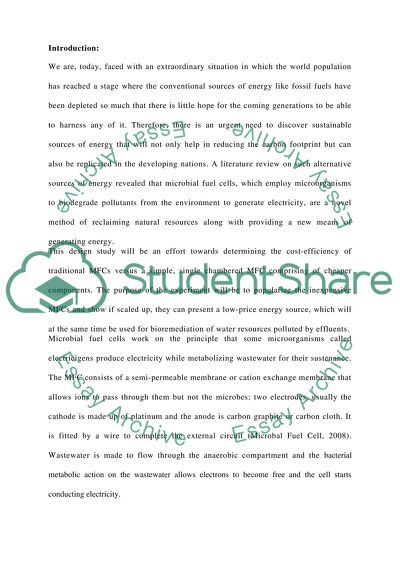Cite this document
(“Microbial Fuel Cells (Design Study) Essay Example | Topics and Well Written Essays - 1500 words - 1”, n.d.)
Microbial Fuel Cells (Design Study) Essay Example | Topics and Well Written Essays - 1500 words - 1. Retrieved from https://studentshare.org/biology/1617166-microbial-fuel-cells-design-study
Microbial Fuel Cells (Design Study) Essay Example | Topics and Well Written Essays - 1500 words - 1. Retrieved from https://studentshare.org/biology/1617166-microbial-fuel-cells-design-study
(Microbial Fuel Cells (Design Study) Essay Example | Topics and Well Written Essays - 1500 Words - 1)
Microbial Fuel Cells (Design Study) Essay Example | Topics and Well Written Essays - 1500 Words - 1. https://studentshare.org/biology/1617166-microbial-fuel-cells-design-study.
Microbial Fuel Cells (Design Study) Essay Example | Topics and Well Written Essays - 1500 Words - 1. https://studentshare.org/biology/1617166-microbial-fuel-cells-design-study.
“Microbial Fuel Cells (Design Study) Essay Example | Topics and Well Written Essays - 1500 Words - 1”, n.d. https://studentshare.org/biology/1617166-microbial-fuel-cells-design-study.


